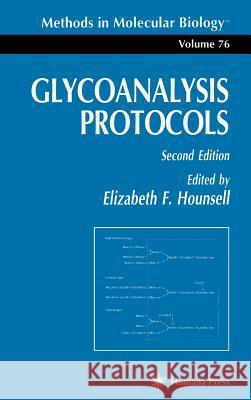Glycoanalysis Protocols » książka
Glycoanalysis Protocols
ISBN-13: 9780896033559 / Angielski / Twarda / 1998 / 262 str.
Protein glycosylation is now acknowledged as a major posttranslational modification with significant effects on protein folding, conformation distri- bution, stability, and activity. The added oligosaccharide chains are large and diverse and have specific recognition motifs important in many aspects of cell interactions and regulation. As such, there is a growing need to communicate the analytical methods of the specialist carbohydrate chemist, biochemist, and physicochemist to protein experts and the pharmaceutical industry. Other areas that come under the influence of the glycosciences are DNA interactions with ubiquitous saccharide-containing antibiotics and antitumor drugs; inhibitors of viral infection; bacterial, mycobacterial, and parasite antigens; glycolipids; glycophosphatidylinositol protein membrane anchors; and (glyco)protein- proteoglycan interactions. Compared to the first edition of this book, Glycopro- tein Analysis in Biomedicine, less emphasis is given to biomedical aspects, but these chapters are still pertinent today. The significant differences in the con- tent relate to advances in analysis relevant to biotechnology; for example, the production of recombinant glycoproteins and other therapeutics. It must also not be forgotten that the methods here described in Glycoanalysis Protocols are relevant to exploiting the commercial potential of carbohydrates in fields related to agriculture, food, and the domestic and chemical industries. The emphasis of the book remains in bringing the glycosciences into mainstream biochemistry. The analytical methods covered in Glycoanalysis Protocols are the re- sult of experts translating their life's works into easy-to-follow recipes.











